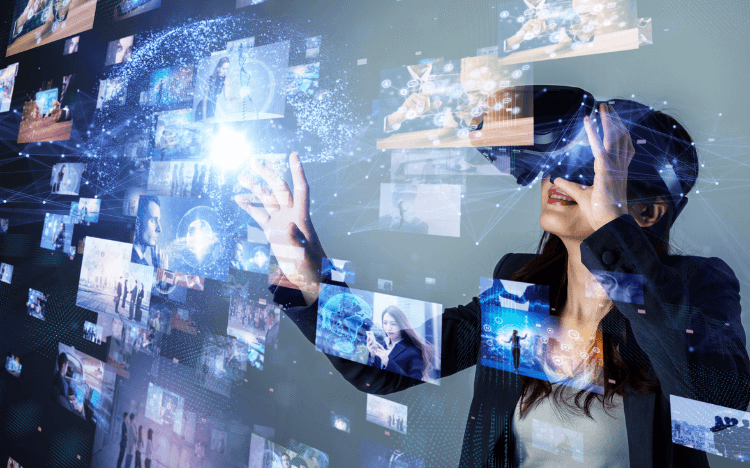In today’s rapidly evolving digital landscape, education is undergoing a profound transformation. With technology becoming increasingly integrated into our daily lives, it’s no surprise that the realm of education is also embracing edtech trends innovation. From virtual classrooms to personalized learning experiences, the possibilities seem endless. But
what are the latest trends shaping the educational landscape, and how are they revolutionizing the way we learn? Let’s embark on a journey through the exciting world of EdTech and explore the trends that are paving the way for the edtech trends future of education.
1. Personalized Learning: Catering to Individual Needs
One of the most significant trends in EdTech is the rise of personalized learning experiences. Gone are the days of one-size-fits-all education. With advancements in technology, educators now have the tools to tailor learning experiences to the unique needs and preferences of each student. Whether it’s adaptive learning platforms that adjust content based on proficiency levels or AI-powered tutors that provide real-time feedback, personalized learning is empowering students to take control of their education journey like never before.
2. Gamification: Making Learning Fun and Engaging
Who said learning can’t be fun? Enter gamification, a trend that is revolutionizing the way students engage with educational content. By integrating game elements such as challenges, rewards, and leaderboards into learning activities, educators are transforming dull lessons into immersive experiences. Whether it’s mastering math concepts through interactive puzzles or learning a new language through gamified quests, gamification edtech trends is turning education into a thrilling adventure.
3. Immersive Technologies: Bringing Learning to Life
Imagine exploring the surface of Mars or dissecting a frog without leaving the classroom. Thanks to immersive technologies such as virtual reality (VR) and augmented reality (AR), students can now embark on virtual field trips and hands-on learning experiences like never before. By transporting learners to far-off places and allowing them to interact with digital simulations, immersive technologies are breaking down the barriers of traditional education and opening up new realms of exploration.
4. Artificial Intelligence: The Rise of Intelligent Tutoring Systems
Artificial Intelligence (AI) is revolutionizing every aspect of our lives, and education is no exception. In recent years, AI-powered tutoring systems have gained traction in classrooms around the world. These intelligent systems analyze data on student performance to provide personalized feedback and adaptive learning pathways. Whether it’s helping struggling students grasp difficult concepts or challenging advanced learners with tailored exercises, AI is redefining the role of the teacher and empowering students to reach their full potential.
5. Collaborative Learning: Fostering Communication and Collaboration
In today’s interconnected world, collaboration is key to success. EdTech is enabling collaborative learning experiences that transcend geographical boundaries and bring students together in virtual classrooms. Whether it’s through video conferencing tools, collaborative documents, or online discussion forums, students can now collaborate on projects, share ideas, and learn from each other’s perspectives in real-time. By fostering communication and collaboration, EdTech is preparing students for the collaborative workforce of the future.
6. Microlearning: Bite-Sized Learning for Busy Lifestyles
In a fast-paced world where time is of the essence, microlearning is gaining popularity as an effective way to deliver educational content. Instead of lengthy lectures or extensive reading assignments, microlearning breaks down lessons into bite-sized chunks that can be consumed in short bursts. Whether it’s watching a five-minute video tutorial or completing a quick quiz on a mobile app, microlearning allows students to fit learning into their busy lifestyles and retain information more effectively.
7. Data Analytics: Leveraging Data for Informed Decision-Making
Data is the new currency of the digital age, and in education, it’s no different. EdTech platforms are leveraging data analytics to track student progress, identify learning gaps, and measure the effectiveness of teaching strategies. By analyzing vast amounts of data on student performance, educators can make informed decisions to optimize learning outcomes. Whether it’s adjusting curriculum materials based on student feedback or providing targeted interventions for struggling learners, data analytics is empowering educators to drive positive change in education.
8. Accessibility and Inclusivity: Ensuring Education for All
Inclusivity is at the heart of education, and EdTech is playing a pivotal role in ensuring access to quality learning experiences for all students, regardless of their backgrounds or abilities. From screen readers and captioning tools for students with disabilities to language translation features for English language learners, EdTech is breaking down barriers to learning and creating a more inclusive educational environment. By prioritizing accessibility and inclusivity, educators can ensure that every student has the opportunity to thrive and succeed.
Conclusion: Embracing the Future of Education
As we journey through the exciting world of EdTech, it’s clear that the future of education is bright and full of possibilities. From personalized learning experiences to immersive technologies and AI-powered tutoring systems, the latest trends in EdTech are revolutionizing the way we learn and teach. By embracing these innovations and harnessing the power of technology, educators can create engaging, inclusive, and personalized learning experiences that empower students to reach their full potential. So, let’s embrace the future of education and unlock the endless possibilities that EdTech has to offer
